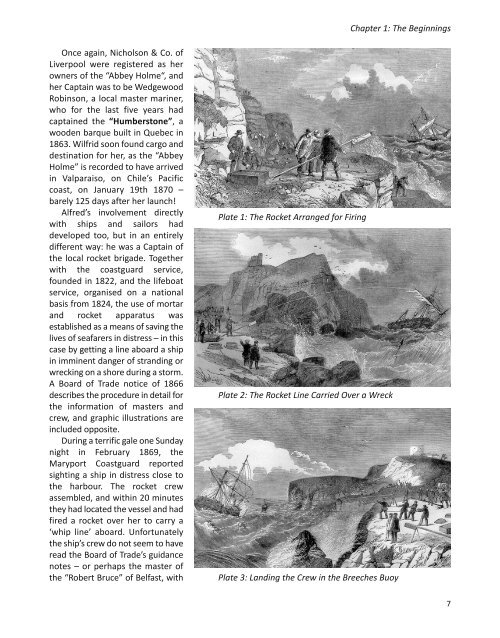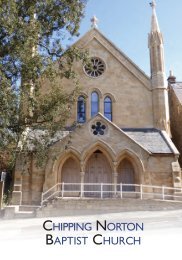A Cumberland Endeavour Sample
The story of Hine Brothers of Maryport, a shipping company founded and run by Wilfrid and Alfred Hine in the la er half of the nineteenth century. This book links the milestones in the company’s development to the important events in the lives of the brothers and their wider family; to the ships and the exploits of their captains and crews; and to Maryport itself, through the Victorian era un l just before the Great War.
The story of Hine Brothers of Maryport, a shipping company founded and run by Wilfrid and Alfred Hine in the la er half of the nineteenth century. This book links the milestones in the company’s development to the important events in the lives of the brothers and their wider family; to the ships and the exploits of their captains and crews; and to Maryport itself, through the Victorian era un l just before the Great War.
You also want an ePaper? Increase the reach of your titles
YUMPU automatically turns print PDFs into web optimized ePapers that Google loves.
Chapter 1: The Beginnings<br />
Once again, Nicholson & Co. of<br />
Liverpool were registered as her<br />
owners of the “Abbey Holme“, and<br />
her Captain was to be Wedgewood<br />
Robinson, a local master mariner,<br />
who for the last five years had<br />
captained the “Humberstone”, a<br />
wooden barque built in Quebec in<br />
1863. Wilfrid soon found cargo and<br />
destination for her, as the “Abbey<br />
Holme” is recorded to have arrived<br />
in Valparaiso, on Chile’s Pacific<br />
coast, on January 19th 1870 –<br />
barely 125 days after her launch!<br />
Alfred’s involvement directly<br />
with ships and sailors had<br />
developed too, but in an entirely<br />
different way: he was a Captain of<br />
the local rocket brigade. Together<br />
with the coastguard service,<br />
founded in 1822, and the lifeboat<br />
service, organised on a national<br />
basis from 1824, the use of mortar<br />
and rocket apparatus was<br />
established as a means of saving the<br />
lives of seafarers in distress – in this<br />
case by getting a line aboard a ship<br />
in imminent danger of stranding or<br />
wrecking on a shore during a storm.<br />
A Board of Trade notice of 1866<br />
describes the procedure in detail for<br />
the information of masters and<br />
crew, and graphic illustrations are<br />
included opposite.<br />
During a terrific gale one Sunday<br />
night in February 1869, the<br />
Maryport Coastguard reported<br />
sighting a ship in distress close to<br />
the harbour. The rocket crew<br />
assembled, and within 20 minutes<br />
they had located the vessel and had<br />
fired a rocket over her to carry a<br />
‘whip line’ aboard. Unfortunately<br />
the ship’s crew do not seem to have<br />
read the Board of Trade’s guidance<br />
notes – or perhaps the master of<br />
the “Robert Bruce” of Belfast, with<br />
Plate 1: The Rocket Arranged for Firing<br />
Plate 2: The Rocket Line Carried Over a Wreck<br />
Plate 3: Landing the Crew in the Breeches Buoy<br />
7



